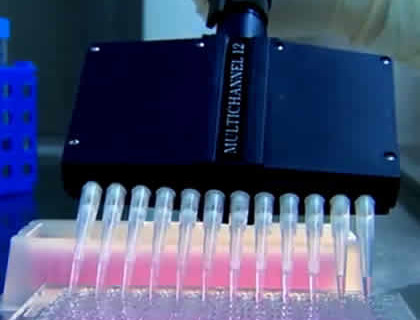
New Technologies and Trends in Cell Line Development
Informa’s Cell Line Development and Engineering conference last month was full of pharmaceutical companies and solutions providers sharing best practices, innovative solutions and emerging trends in Cell Line Development.
I was pleased to attend the conference and wanted to share some highlights.
Clonality
The topic of clonality is still a hot topic and provided the starting point for several interesting discussions. While the FDA did not have a presentation this year, a large portion of the talks moved from regulatory requirements to how companies best ensure clonality in new cell lines or address clonality in legacy cell lines. There were many case studies presented which presented real life examples of how companies are managing this on a daily basis and these thoughts were particularly enlightening. Also included were presentations from pharmaceutical companies and vendors on novel single cell isolation technologies. These talks focused primarily on selecting for expression combined with clonality, plus recovery in low volumes of media. Several manufacturers continue to focus on traditional techniques such as plating into semi-solid media; and determining the protein titre of a clone at the static phase. We found this approach interesting as many cell line development groups have moved away from these approaches for a variety of reasons. Some point out that semi-solid media selects for certain cell attributes, and titre at static phase does not correlate well with fed-batch. Some of these novel approaches may provide enrichment for potentially higher producers, but equally pre-selection by FACS or vector optimisation can achieve the same sorts of results.
Another novel technology, using next generation sequencing (NGS) for proving the clonality of legacy production cell lines was discussed in two presentations. They discussed the use of whole genome NGS to improve clone selection by mapping transgene integration sites. This process also takes into account transgene copy number, different integration sites, genomic mutations for clonal fitness, and possible transgene mutations. Whilst this approach is great for determining clonaliy after the fact, there seemed to be a consensus that this can be quite labour intensive and so ensuring clonaly up front maybe the easier way for companies to go.
In-sourcing vs. Outsourcing
Another topic of discussion was whether to in-source or out-source cell line development. There was a presentation that focused on why ‘in-sourcing’ of cell line development is more productive for small biotech companies when dealing with complex molecules; and challenges around the production of recombinant proteins such as immunocytokines (antibody linked to a cytokine).
Engineering to Increase Lentiviral Vector Production
The last, but perhaps the most interesting, talk of the first day explained the challenges of editing HEK 293T cell lines to produce lentiviral vectors. We also heard about their increasing number of applications such as CAR-T therapy. Conrad Vink from GSK showed us how traditional methods of transfecting several plasmids containing the individual viral components only resulted in transient expression. Because of this, their efforts have focused on the development of methods to create a single plasmid (containing all the components required to make a viral vector) and transfect it into the cell. Using this method they can then carry out selection and induction to produce a stable packaging cell line which will produce the viral vector. The transgene can then be transfected as and when required. This is quite exciting for the progress of lentirviral production as the stable cell lines generated in this process will be easier to edit for future targets, hopefully making the entire process faster for patient treatments and enabling the large amounts of materials needed for clinical trials to be manufactured more easily and cost effectively.
Synthetic Biology in Cell Line Development
Several presentations on the second day of the conference described the use of synthetic biology to help understand success and failure in cell line development. Prof David James from Sheffield University opened the day with a discussion around why companies should change their focus from blind cell line development – without really understanding what’s happening to the cells – to the introduction of genetic analysis and synthetic biology techniques. According to David, this will help us all reach a greater understanding of cell line development success. He also emphasised how design should be considered “up front” of cell line development in order to reduce unknowns and “tune cell factories for the production of any protein”.
Lin Zhang from Pfizer then echoed David’s views by outlining their approach to targeted integration with the use of recombinase mediated cassette exchanged (RMCE) to switch a ‘landing pad’ with whatever monoclonal antibody (mAb) they want to integrate. They used CRIPSR to generate the cell line with a ‘landing pad’ that can easily be switched out ensuring the integration site remains the same and is no longer random. Practically speaking, the landing pad means they can reduce the number of clones to be screened and the impact is that one person can now do 3 projects instead of just one.
In line with the themes above, Holger Laux from Novartis explained how they are increasing recombinant antibody expression using transcriptomics and engineering. As an example, they established that the loss of the telomeric region on chromosome 8 resulted in a higher expression of the antibody, and so they designed a knock-out cell line that eliminated this region. As a result, the cell line is now predisposed to produce the protein at high levels (35x increase). This is another example of how understanding the cell’s genetics better can aid the production of stable cell line and future developments of cell lines.
Impact of perfusion vs. fed-batch
There were talks by Arna Andrews from BioCSL and a scientist from Merck in Vevey about the trend towards perfusion compared with fed-batch. Merck talked about screening methods early on for clonal phenotypes in perfusion cell media. This really led to a recurring theme of screening for critical quality attributes earlier in the CLD process with best fit for intended process and product quality
I came away from the conference with a renewed sense of optimism about the exciting developments taking place in our industry overall, and affirmation that the further products we are launching and developing at our own company will make a significant contribution to scientists in this field.
I look forward to attending Informa’s Cell Line Development and Engineering Conference next month in San Francisco, if you are attending too, please stop in and say hello at Solentim’s Booth #200
About the Author:

Andrea Gough, Product Manager, Solentim
Andrea Gough joined Solentim just over 2 years ago from ThermoFisher where she was an Associate Product Manager. Prior to that she was at Genetix where she had been an Applications Scientist for ClonePix and CloneSelect Imager product lines. Andrea is based out of our Global HQ in the UK.